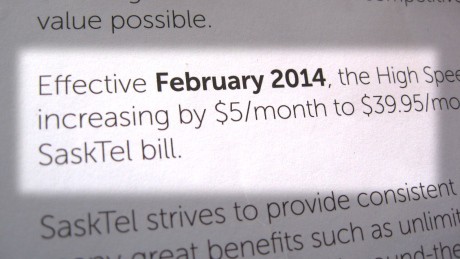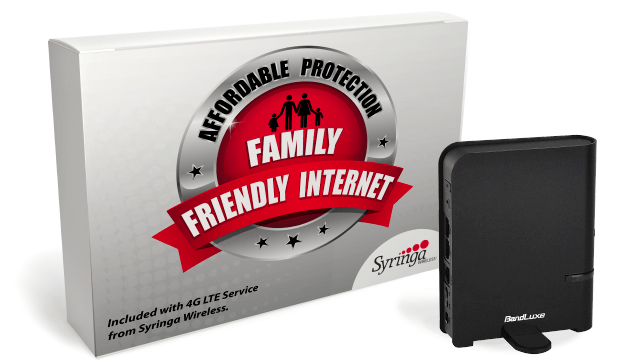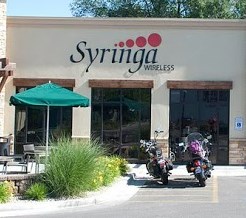
SaskTel is raising prices … and broadband speeds. (Image: CBC)
Internet access on the prairie is getting more expensive as provincial-owned phone company SaskTel notifies its Saskatchewan customers it is raising certain DSL and fiber broadband prices by $5 a month — a 14% rate hike.
Effective Feb. 1, prices for High Speed Classic DSL and fiber service will rise to at least $39.95 a month. For DSL customers, that means nearly $40 a month for 1.5Mbps service.
SaskTel, a crown corporation, is telling customers it needs the money to upgrade its network and maintain customer support.
The phone company has a bold plan to replace copper wire infrastructure with fiber to the home service in each of Saskatchewan’s nine largest communities: Saskatoon, Regina, Moose Jaw, Weyburn, Estevan, Swift Current, Yorkton, North Battleford, and Prince Albert. The fiber network, dubbed infiNET, is already operational in parts of Moose Jaw and will be introduced in Prince Albert this spring.
SaskTel has a range of price points for its fiber network ranging from $39.95 a month for 2/1Mbps service to 260/30Mbps service for $139.95 a month.
[flv]http://www.phillipdampier.com/video/SaskTel – Building the future with infiNET 5-30-13.mp4[/flv]
Sasktel’s $800 million fiber to the home project is Canada’s most ambitious, because it will blanker urban, suburban, and near-rural customers. This video explores innovations Sasktel is finding to deal with Saskatchewan’s harsh climate, including fiber cables that stay flexible at -40 degrees and directional boring to quickly and inexpensively install underground fiber to homes. (3:28)


 Subscribe
Subscribe
 Frontier and the State of West Virginia received more than $126 million of taxpayer money to subsidize the fiber network and the expansion of broadband service into rural areas of the state. Frontier agreed to offer a minimum of 4/1Mbps service to each home connected through the subsidy program.
Frontier and the State of West Virginia received more than $126 million of taxpayer money to subsidize the fiber network and the expansion of broadband service into rural areas of the state. Frontier agreed to offer a minimum of 4/1Mbps service to each home connected through the subsidy program.
 Cincinnati Bell is an island in the middle of a sea of AT&T — offering over 258,000 southwestern Ohio residents and businesses access to a fiber to the home network that has kept customer disconnects down and broadband speeds up.
Cincinnati Bell is an island in the middle of a sea of AT&T — offering over 258,000 southwestern Ohio residents and businesses access to a fiber to the home network that has kept customer disconnects down and broadband speeds up. The company has plans to bring Fioptics to 35 percent of Cincinnati by the end of this year, according to Leigh Fox, chief technology officer for Cincinnati Bell. The company has successfully upgraded its fiber network to offer 53,000 more homes a fiber alternative to Time Warner Cable during the first nine months of this year. At least 29 percent of Cincinnati residents have cut Time Warner Cable’s cord at least once, trying the fiber to the home service.
The company has plans to bring Fioptics to 35 percent of Cincinnati by the end of this year, according to Leigh Fox, chief technology officer for Cincinnati Bell. The company has successfully upgraded its fiber network to offer 53,000 more homes a fiber alternative to Time Warner Cable during the first nine months of this year. At least 29 percent of Cincinnati residents have cut Time Warner Cable’s cord at least once, trying the fiber to the home service. An independent cell phone provider in Idaho has found a unique niche to innovate beyond offering traditional cell phone service by launching unlimited 20Mbps home broadband Internet access over its wireless 4G LTE network.
An independent cell phone provider in Idaho has found a unique niche to innovate beyond offering traditional cell phone service by launching unlimited 20Mbps home broadband Internet access over its wireless 4G LTE network. Syringa’s fixed wireless broadband puts the company in a stronger position for a Wireless Internet Service Provider (WISP), because it is able to also market traditional cell phone service for its rural customer base. Syringa still sells unlimited smartphone data plans and has a roaming agreement with a major national carrier for cell phone users traveling outside of Syringa’s home service area.
Syringa’s fixed wireless broadband puts the company in a stronger position for a Wireless Internet Service Provider (WISP), because it is able to also market traditional cell phone service for its rural customer base. Syringa still sells unlimited smartphone data plans and has a roaming agreement with a major national carrier for cell phone users traveling outside of Syringa’s home service area.